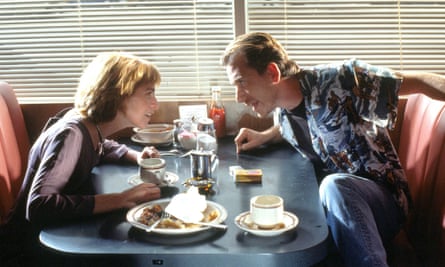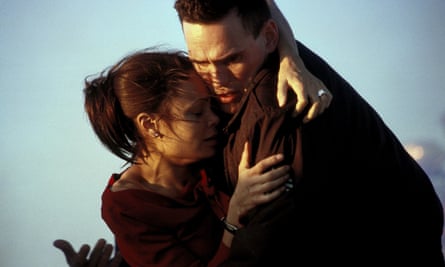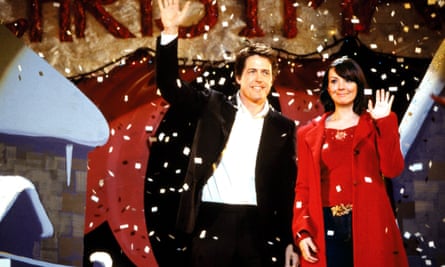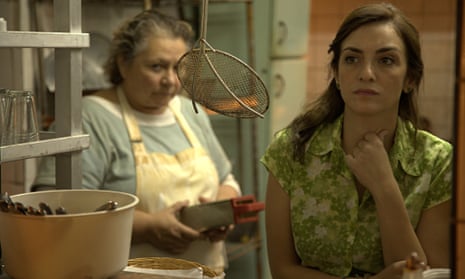Everyone should see Damián Szifrón’s Wild Tales. And, if possible, everyone should see it in a packed cinema. A record-breaking hit in its native Argentina, the Oscar-nominated film is a portmanteau of six gleefully twisted short stories, each focusing on an over-the-top revenge. Watch it with a few fellow viewers and its spiralling black humour will make you giddy. But catch it as part of a crowd and you may experience an all-too-rare phenomenon when the first segment ends: a cinema full of people cheering and applauding.
That’s what I experienced when Wild Tales was screened at Cannes last year. And it seemed to me that the audience wasn’t just delighted by Szifrón’s opening tale. We were also delighted by the knowledge that there were five more in store. In other words, we were rediscovering our love of portmanteaux, anthologies, omnibuses, whatever you want to call them – films comprising several stand-alone segments that come one after another (although there may be the occasional overlap here and there).
Not that my own love of the form needed rediscovering. Maybe it’s because I saw Monty Python’s The Meaning of Life and Twilight Zone: The Movie at an impressionable age (both were released in 1983). But for me, an anthology film has always been one of the medium’s most lip-smacking treats. From 1945’s Dead of Night to 2005’s Sin City, it’s a format that requires each part to be concise and enthralling. And if you don’t happen to enjoy one particular section, you know another will be along in a minute. The only trouble is that there aren’t enough portmanteaux being made.
“One problem we had,” says Szifrón, “is that we didn’t have a lot of examples of similar films that worked well, either commercially or artistically. So it’s hard to stay confident when the industry thinks stuff like this can’t find an audience.”

Two decades before Wild Tales raised the rafters at Cannes, Pulp Fiction made its debut at the festival. All sorts of appreciations were published to mark its 20th anniversary last year, but one aspect that didn’t get much attention was the fact that it, too, was a portmanteau. Quentin Tarantino had assembled three stories, plus a prologue and an epilogue (four stories, actually, if you count Christopher Walken’s painfully funny PoW gold-watch-up-the-backside anecdote).
When Pulp Fiction became a cultural landmark, those of us with a fondness for portmanteaux assumed there would be plenty more where that came from. And we were briefly right. Tarantino’s next film was an anthology, 1995’s Four Rooms, on which he shared directing duties with Robert Rodriguez, Allison Anders, and Alexandre Rockwell; in the same year, Eric Rohmer released a charming triptych, Rendezvous in Paris.
After that, though, the flow slowed to a trickle. We may have been subjected to countless sadistic thrillers involving sharp-suited gangsters with verbal diarrhoea, but the one element of Pulp Fiction that wasn’t imitated by an army of Tarantino wannabes was its structure. Instead, another film was to prove far more influential. While it was undeniably spellbinding, Robert Altman’s Short Cuts, released in 1993, was bad news for fans of the portmanteau. The film gathered together nine short stories and a poem by Raymond Carver – but, rather than sticking to an anthology arrangement, Altman wove them into one intricate tapestry, thereby introducing the term “Altmanesque” to a whole new generation.
Six years later, Paul Thomas Anderson’s Magnolia intertwined a dozen stories with similarly beguiling results, but Short Cuts was the gamechanger. While traditional portmanteaux still appeared, they were now the exception: in the early noughties, the default way for any film-maker to present multiple narratives was to simply chop them into small pieces and stir them into a stew. Lots of these so-called “hyperlink” films were hugely successful: Traffic, Love Actually, Intermission, Crash. But, acclaimed as they were, how many of us would choose to sit through Stephen Gaghan’s Syriana or Alejandro González Iñárritu’s Babel again? And in the last decade, hyperlink films have been getting worse. Love Actually triggered a production line of saccharine ensemble romcoms, all of which made you grateful Altman didn’t live to see what he sparked: Valentine’s Day, New Year’s Eve, What to Expect When You’re Expecting.
Crash, meanwhile, persuaded a host of struggling writer-directors that if they could dream up three or four hardboiled vignettes set in the same city and coax some B and C-list actors to give up a couple of weeks each, they would end up with something that might seem, from a distance, respectable. So we got the barely remembered likes of The Air I Breathe (featuring Sarah Michelle Gellar and Brendan Fraser); Powder Blue (with Jessica Biel and Ray Liotta); and last year’s Reach Me (Sylvester Stallone, Tom Sizemore, Tom Berenger and Cary Elwes – together at last!). The pretentious vagueness of the titles tells you all you need to know.

See enough hyperlink films and you’ll soon start muttering: “Yes, yes, we get it – we’re all connected. Human life is a marvellous web of chance meetings and coincidences – the person you’ve just bumped into in an airport gift shop is a hitman on his way to murder your brother’s wife. Now, where’s the actual plot?”
It isn’t just minor writers and directors who use the structure to hoodwink audiences, either. In 2010, Woody Allen’s You Will Meet a Tall Dark Stranger was shoddy even by the standard of his other London-based films, but it was no feebler than Peter Morgan and Clint Eastwood’s Hereafter, which hyperlinked the 2004 Indian ocean tsunami, the London bombings of 2005 and, well, Derek Jacobi’s audiobook of Little Dorrit. There was further awfulness to come. The sub-Altman form finally hit rock bottom last year with Third Person, an unbearable navel-gazing exercise written and directed by Paul Haggis. It’s nearly two and a half hours long, but none of its three strands is substantial enough to qualify as an actual story.
That’s why I prefer a good honest portmanteau. It’s less tricksy than a hyperlink film. Every section has to stand or fall on its own merits, as well as complement the whole. If one segment doesn’t entertain, it risks being cut out: the other segments will survive without it. Sub-Altman hyperlink films, on the other hand, can use their constant back-and-forthing to disguise the weakness of the individual strands. You don’t get such shilly-shallying from Dr Terror’s House of Horrors, where every gruesome story packs a punch and has a twist to remember. Great title, too.

“I wrote these stories while working on regular screenplays,” says Szifrón. “At the beginning, I didn’t know what to do with them. But by the time I had four or five, I noticed they all had the same DNA, they were linked thematically. So I said to myself, ‘These are all tracks that belong on the same album, they are like stars from the same constellation.’ And as soon as I found the name Wild Tales, I knew that was all I needed.”
Aspiring film-makers, take note. Now that Szifrón has shown the way, it could be that the traditional portmanteau will come back into fashion. A star-studded anthology of Australian short stories called The Turning is due on DVD in April. And a new wave of low-budget horror anthologies is already enabling nascent directors to get their work in front of audiences. They probably won’t have anything airy-fairy to say about the network of invisible threads that bind our fates. But, with any luck, they should get audiences cheering and applauding.

Comments (…)
Sign in or create your Guardian account to join the discussion